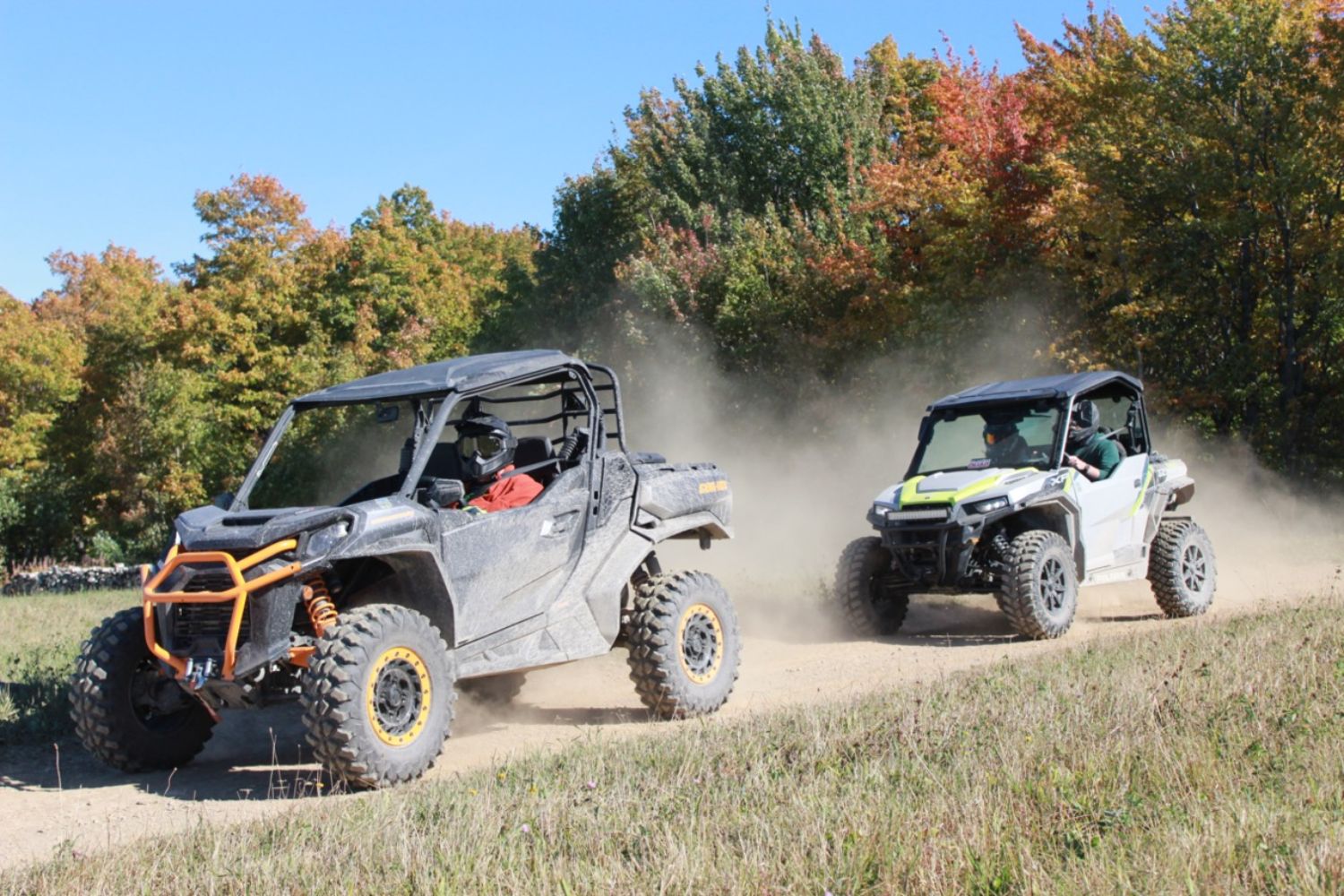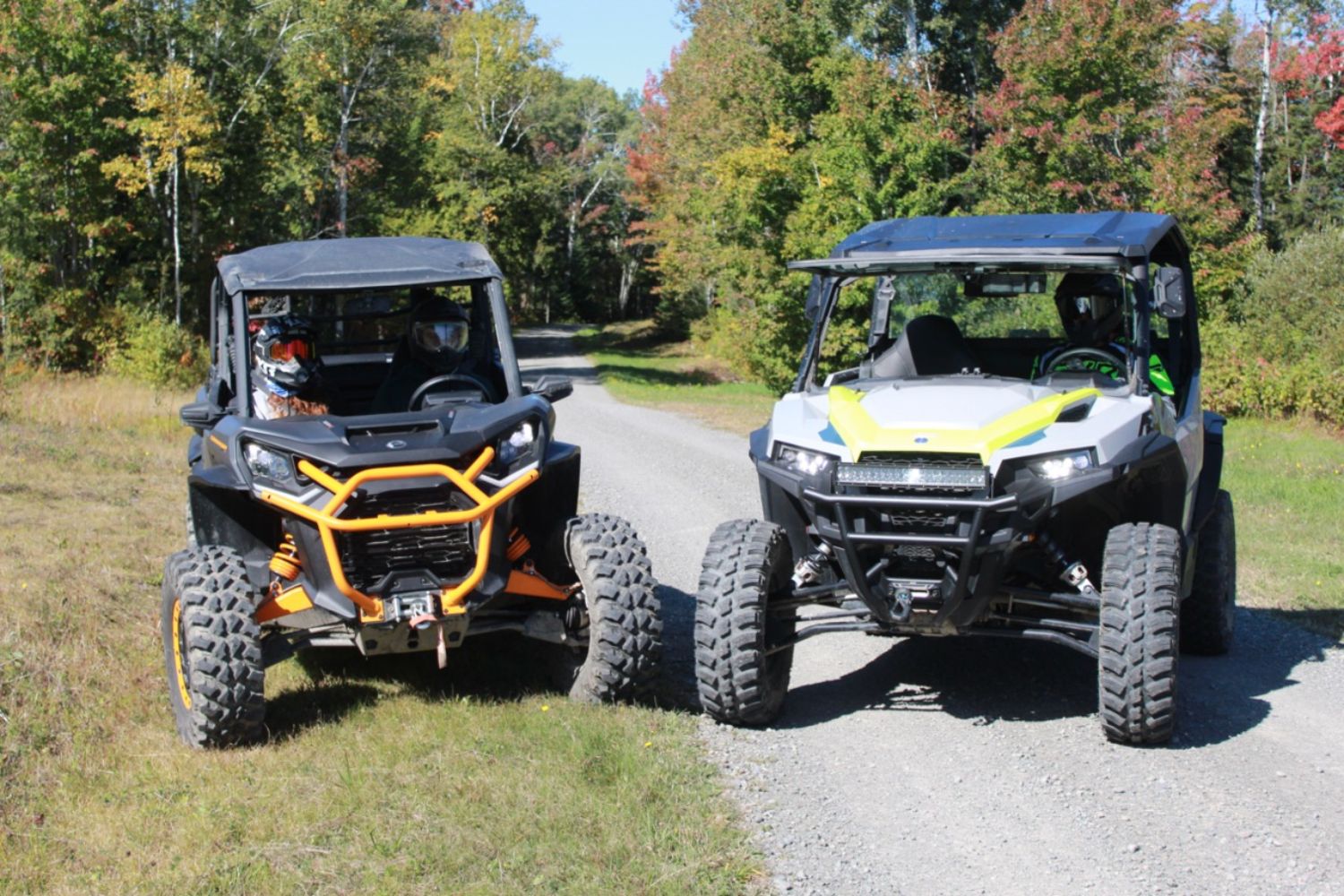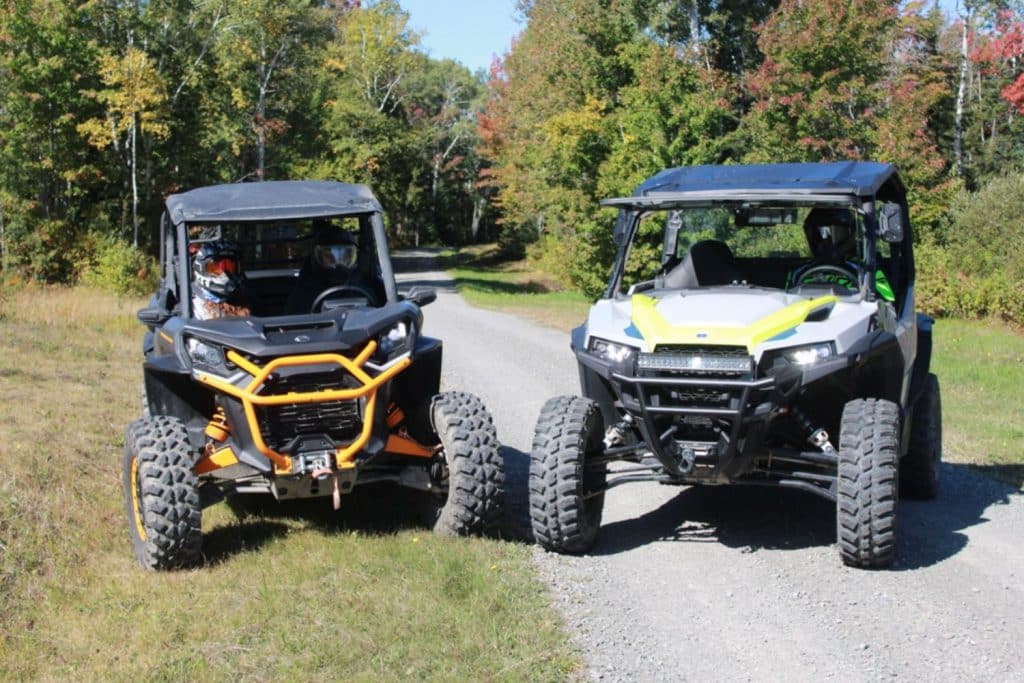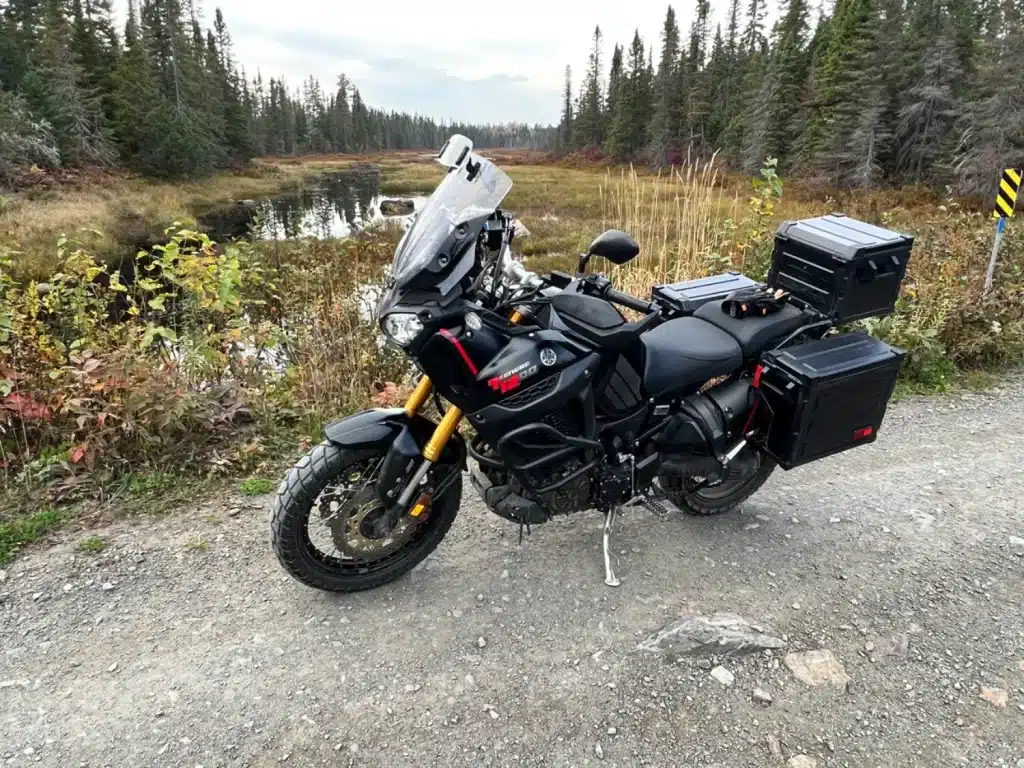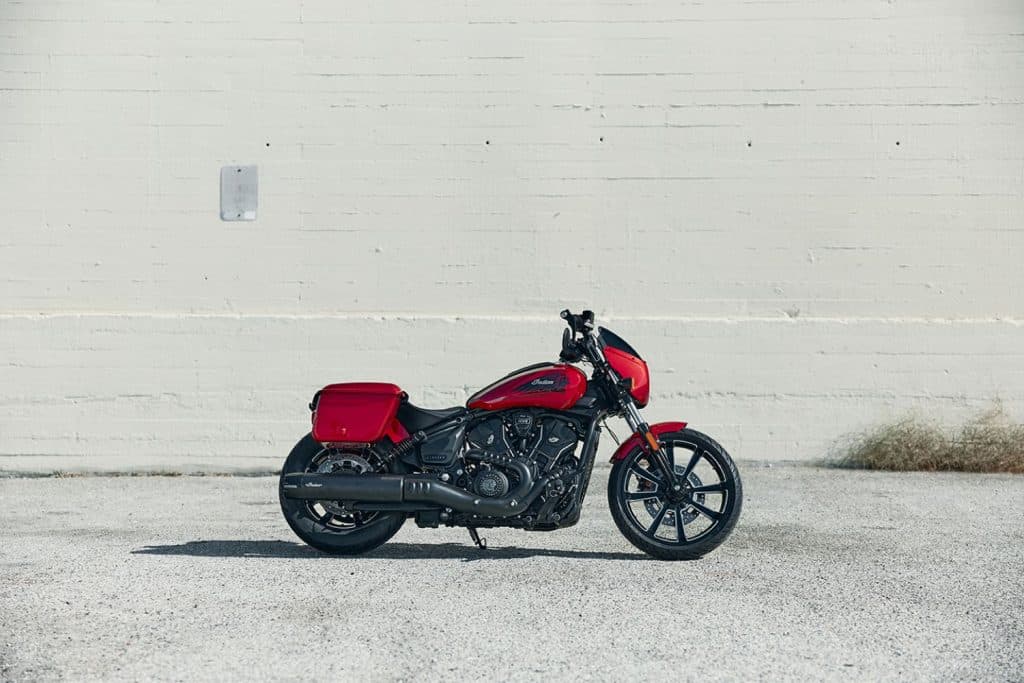These two side-by-side vehicles are two major players in the crossover category. This category offers a high level of versatility by combining comfort, work capacity, and powertrain performance in a single vehicle.
We thought it would be interesting to compare them to identify the personality, strengths, and weaknesses of the Can-Am Commander 1000R XT-P and the Polaris General XP 1000 Sport in this category. For comparison purposes, we chose two vehicles with comparable equipment levels. The Commander is a 2025 model and the General XP 1000, which belongs to a member of the team, is a 2024, but the only thing that differentiates it from a 2025 is the body color.

Comparison method
Unlike other comparisons that Raven Media has produced in the past, we will not be ranking the two competitors to declare a winner. We believe it is more beneficial to compare the characteristics of each UTV and share our findings. To ensure the most objective evaluation possible, the editorial team made observations based on six criteria:
- Body, finish, ease of maintenance, and equipment
- Interior ergonomics
- Trail performance
- Engine, transmission, and drivetrain
- Suspension
- Budget

We evaluated the mechanical components and overall appearance with a team of four evaluators. The teams then drove on two varied routes over a total distance of 200 km, swapping vehicles along the way. Here are the results of the comparison.
Bodywork, finish, and equipment
The following were evaluated: overall finish, available equipment, lighting, and bed layout.
Can-Am Commander 1000R XT-P
In its XT-P version, the Commander looks great with its charcoal gray color and contrasting orange equipment. It has a rugged look, emphasized by its large 30-inch tires and prominent bumper. With its narrow cab, it sits firmly on its suspension, giving the Commander a dynamic look. The quality of the plastics and the fit are very good. The finish is rather matte, and the plastics on the lower body have a fine texture that makes encrusted mud difficult to remove when washing. The bed is a good size and very easy to operate. Can-Am paid close attention to detail when designing the bodywork. For example, the bed handle and gas cap are protected from mud splashes from the tires by the bed fender. The lighting is entirely LED, and the headlights are powerful and provide good light distribution.In terms of equipment, the Commander XT-P comes with a hardtop, XT front bumper, 4,500 lb winch, 30-inch tires on 15-inch aluminum rims with bead rings. The vehicle is also equipped with FOX 2.5 Podium gas suspension, which we’ll discuss later. The cooler and cab protector on the box are optional accessories added by Can-Am. Finally, the Commander XT-P is 64 inches wide.

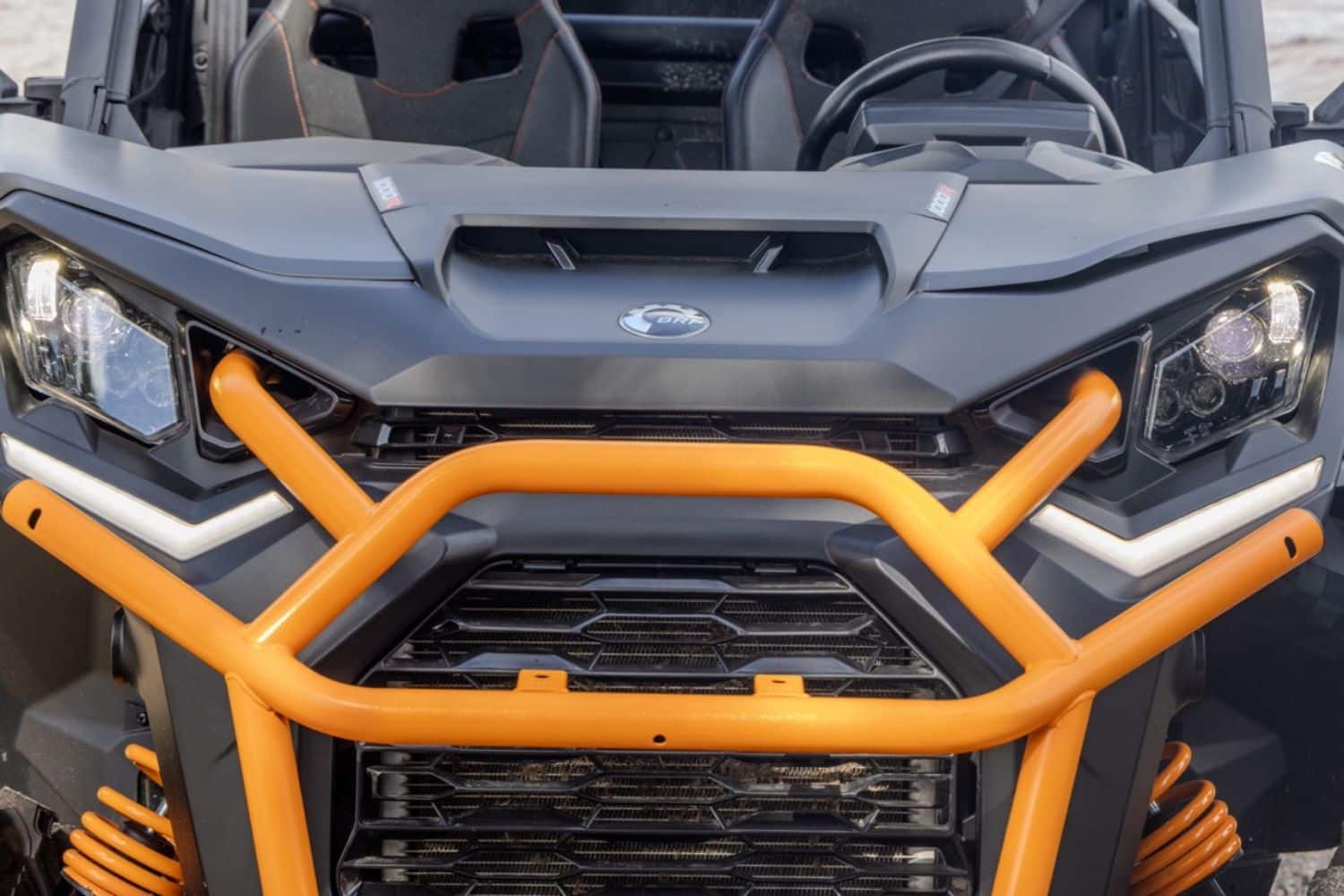
Polaris General XP 1000 Sport:
The General has been around for 10 years, but its balanced design has stood the test of time. The General also makes an impression when riding on trails with its massive silhouette. The vehicle is well-built and the plastic finish is very smooth. The Ghost Grey color is uniform and the color accents are decals. The bed is a good size, but the Can-Am has a slight advantage in terms of dimensions, although both vehicles have a load capacity of 600 lb. There are some irritating details that could be addressed, such as the handle to open the bed, which is always covered in mud, and the mud-covered gas cap, which poses a risk of dirt falling into the filler tube. Note that the lights are all LED and the headlights are also very effective. The General XP 1000 is 64 inches wide.
Standard equipment on the General XP 1000 Sport includes a hardtop, front bumper, 4,500 lb winch, 30-inch tires on 15-inch aluminum wheels, and Walker Evans gas suspension. The two vehicles are therefore very similar in terms of equipment. In the case of the General we tested, the front windshield and wiper, rear window, and rear bumper are accessories added by the owner.
Finally, both vehicles are equipped with their own accessory attachment systems: the Linq system for Can-Am and Lock and Ride MAX for Polaris. Both companies offer a comprehensive catalog of accessories to customize your vehicle. As a result, there is a wide range of accessories available from independent equipment manufacturers.
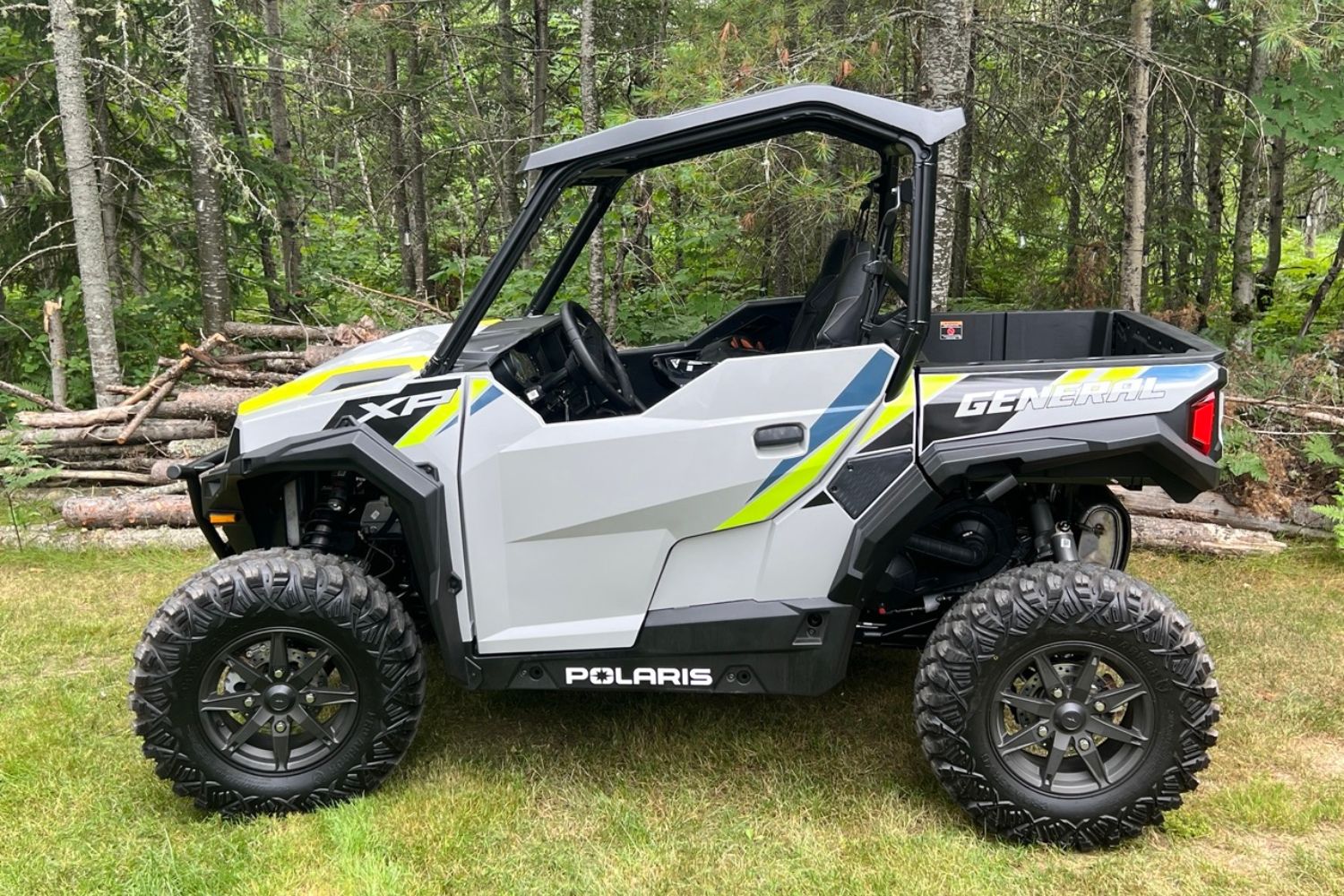

Cabin ergonomics (20 points)
The following are evaluated: driving position, seats and adjustments, noise and vibration control, storage space, control operation, seats, visibility around the vehicle
Can-Am Commander 1000R XT-P
Ergonomics is one of the most notable differences between the two vehicles. In the case of the Can-Am Commander, the driving position is low and the door sill is high to step over. Once in place, the driver sits low and the top of the doors is at shoulder level. The seats are well contoured and comfortable. They hold the occupants securely in place. The interior clearance between the doors is 6 inches less than that of the General. This is why there is no console with armrests between the seats and passengers sit closer together. Storage spaces consist of a closed, waterproof compartment behind the steering wheel and a larger one in front of the passenger. The bottle holders are simply placed on the floor in front of the seats, which isn’t really user-friendly while driving. The instruments are very easy to read and are located directly in front of the driver. All the switches are well placed, easy to identify, and well backlit at night. The noise level of the engines is similar in both vehicles, and they are not the quietest in the industry. Finally, due to the low driving position, visibility around the vehicle is average.
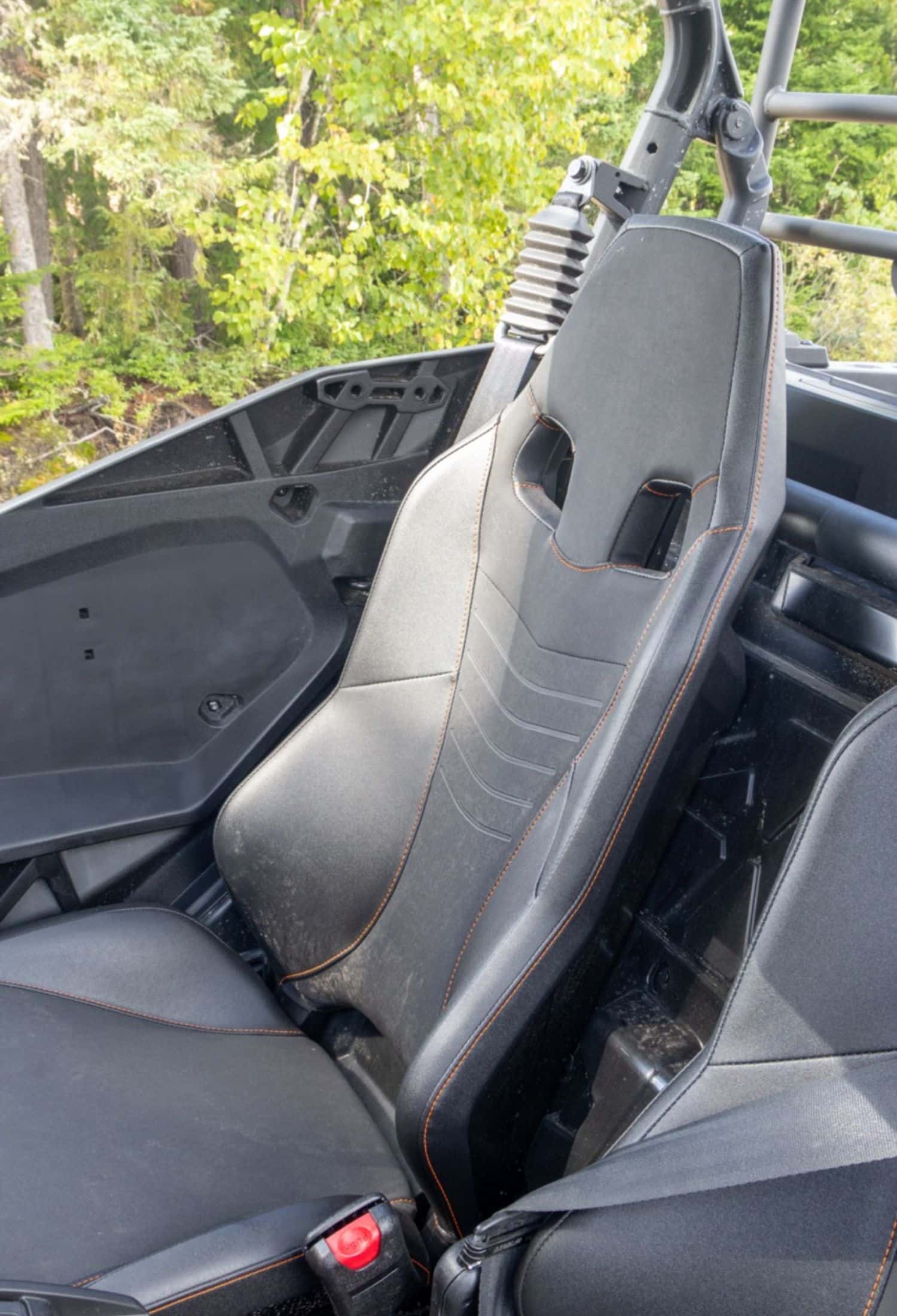
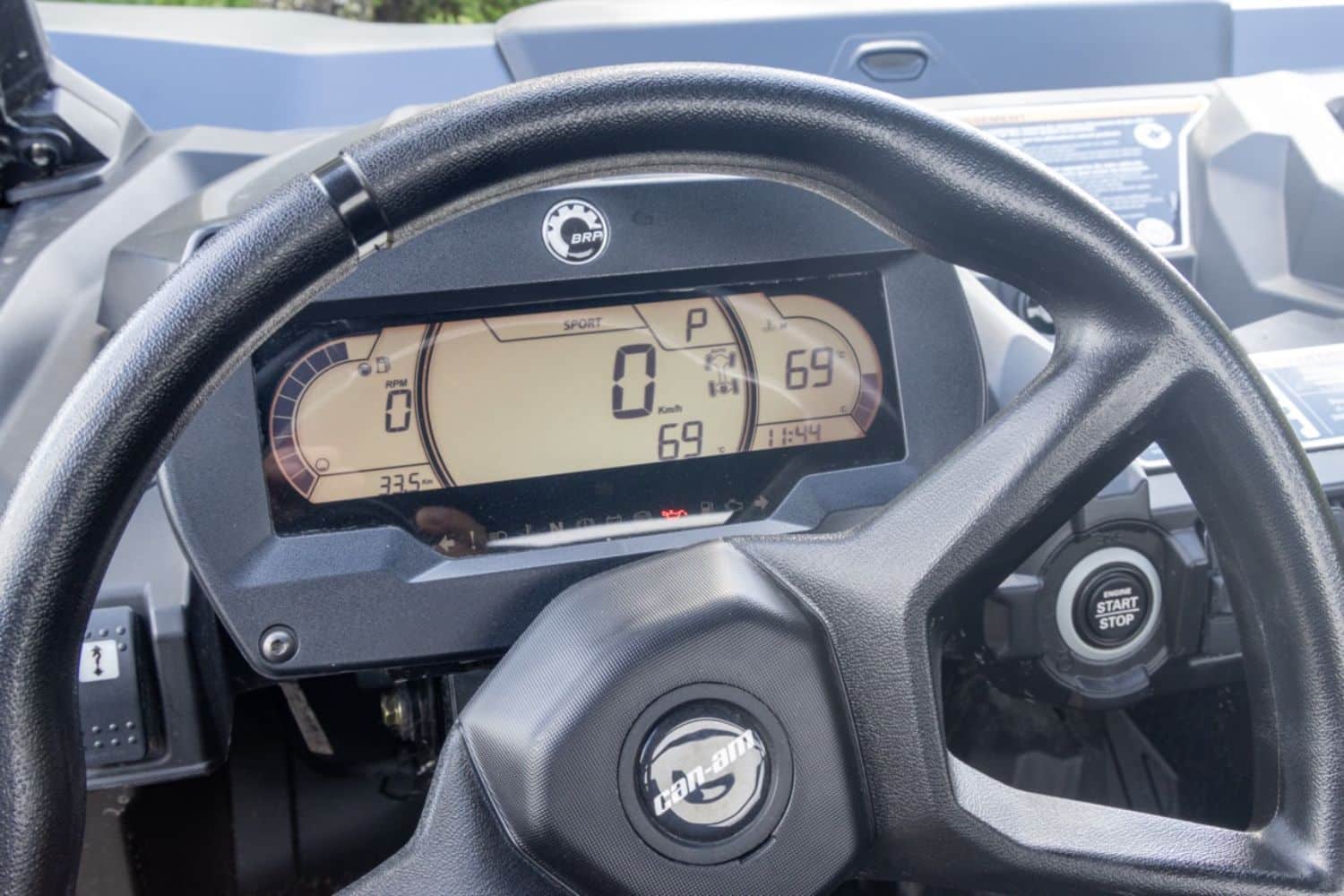
Polaris General XP 1000 Sport:
Getting behind the wheel is easy thanks to the wide-opening doors. You don’t climb into the General’s cabin; you access it much like you would an SUV. The high, upright seating position leaves plenty of legroom, especially since the driver’s seat is adjustable front to back. The rather firm bucket seats in the center prove comfortable even after several hours of driving. The top of the doors are about halfway between the elbow and the shoulder, which gives a good feeling of space.
Once on board, the driver finds himself behind a nicely designed dashboard with plenty of empty slots for equipment such as the Forsgate radio and Ride and Command system. However, this allows for customization with the many accessories available on the market. The two switches on the left side of the steering wheel control the headlights and the vehicle’s traction system. They are easily identifiable, backlit, and easy to operate. However, they are located a little low on the dashboard, and the driver has to tilt their head to see their position. This means that taller drivers may accidentally activate them with their knees when getting into the vehicle. This can result in the headlights being turned off during the day or the vehicle being in two-wheel drive mode in heavy snow. Behind the steering wheel, a digital display is flanked on the right by an engine tachometer and a speedometer.
The two seats are separated by a wide console that houses the gear selector lever and also contains two bottle holders. The center console offers generous space and the armrest is just the right height. Finally, a waterproof glove compartment in front of the passenger completes the storage space in the front. Instead of placing a grab handle in front of the passenger, Polaris decided to place one on the center console and the other in the door. The latter is intrusive in the passenger’s space, who often leaned on it with their thigh. For a vehicle of this size, forward visibility is very good because you can see close up. Rearward visibility is more limited.
In short, the Can-Am plays the sporty ATV card with a more enveloping driving position, while the Polaris is more like an SUV, prioritizing space, ease of access, and a feeling of openness.
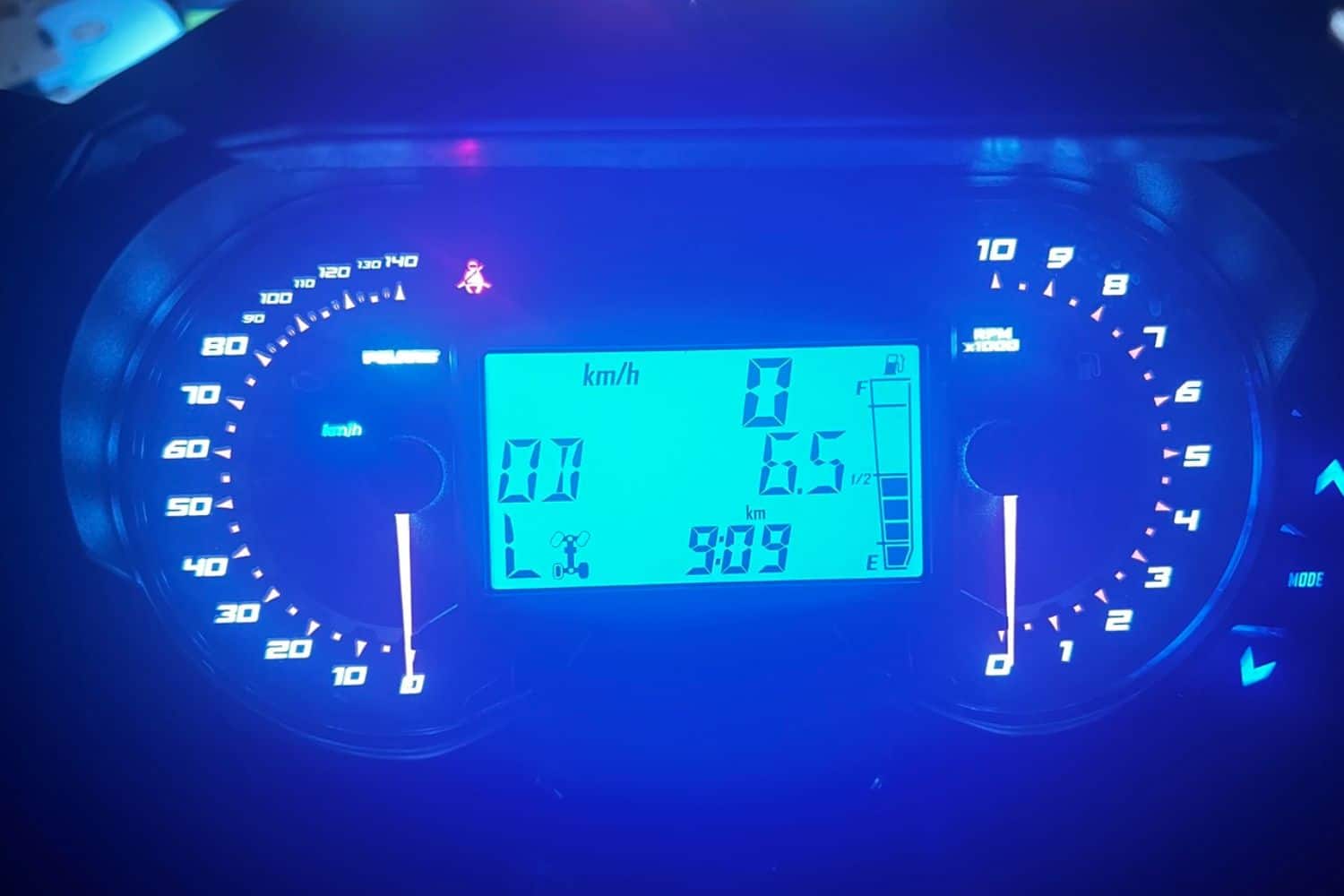
Trail performance (20 points)
The following are evaluated: steering precision, power steering efficiency, stability in high- and low-speed turns, roll and pitch control, braking, overall comfort, etc.
Can-Am Commander 1000R XT-P
The Can-AM XT-P is a vehicle that drives with authority. Can-Am’s performance DNA is very much present in this vehicle. The sporty driving position and the feeling of sitting in a roadster whet the appetite of the enthusiastic driver. From the very first few miles, you can feel that the vehicle’s mechanical components are well integrated and work in harmony. The engine gives the vehicle good power, but in this respect, it’s in the same performance zone as the General. However, the CVT transmission has a more direct feel, and there is no noticeable delay when shifting gears. The engine and transmission combo work very well together without excessive mechanical noise.
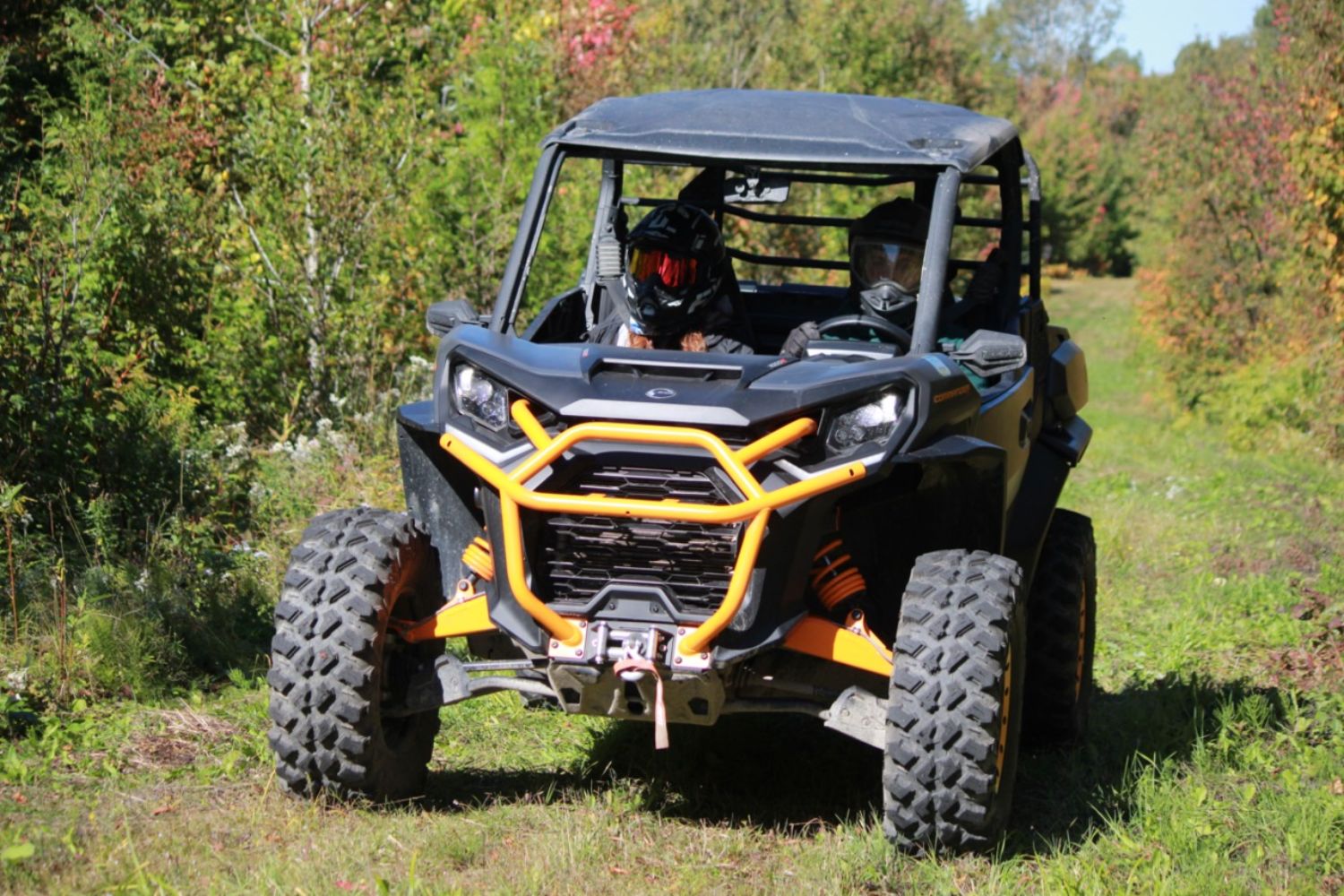
Trail handling is remarkable, thanks in particular to the vehicle’s low center of gravity. The suspension, equipped with FOX 2.5 Podium QS3 shock absorbers, handles roll and vehicle attitude beautifully, but at the cost of sometimes harsh jolts transmitted to the passenger. The steering is impeccably precise. The Commander is equipped with the “Trail Active” system. This balances the power distribution between the front and rear wheels, so that the front wheels pull more. This improves cornering grip under intense acceleration. This system is effective with the 100 horsepower available (with the 200 horsepower of a Maverick X3, it’s impressive). If the driver accelerates hard in a corner, rather than skidding, the vehicle turns and accelerates as if it were on rails.

With a Commander 1000R XT-P, the driver will have a sporty vehicle that will put a smile on their face with every curve and hill the trail has to offer, but they will have to make a concession for less comfort.
Polaris General XP 1000 Sport
The mechanics run very smoothly, without excessive vibration. When engaging the transmission, there is a slight delay before the transmission engages. Once engaged, it offers excellent responsiveness and maintains strong traction up to its maximum speed, which is electronically limited to approximately 70 mph. Whether on flat ground or uphill, power is delivered optimally thanks to the excellent coordination between the transmission and the engine. Although this is not a purely performance-oriented vehicle, its 1000cc engine provides dynamic acceleration that is sure to put a smile on your face.
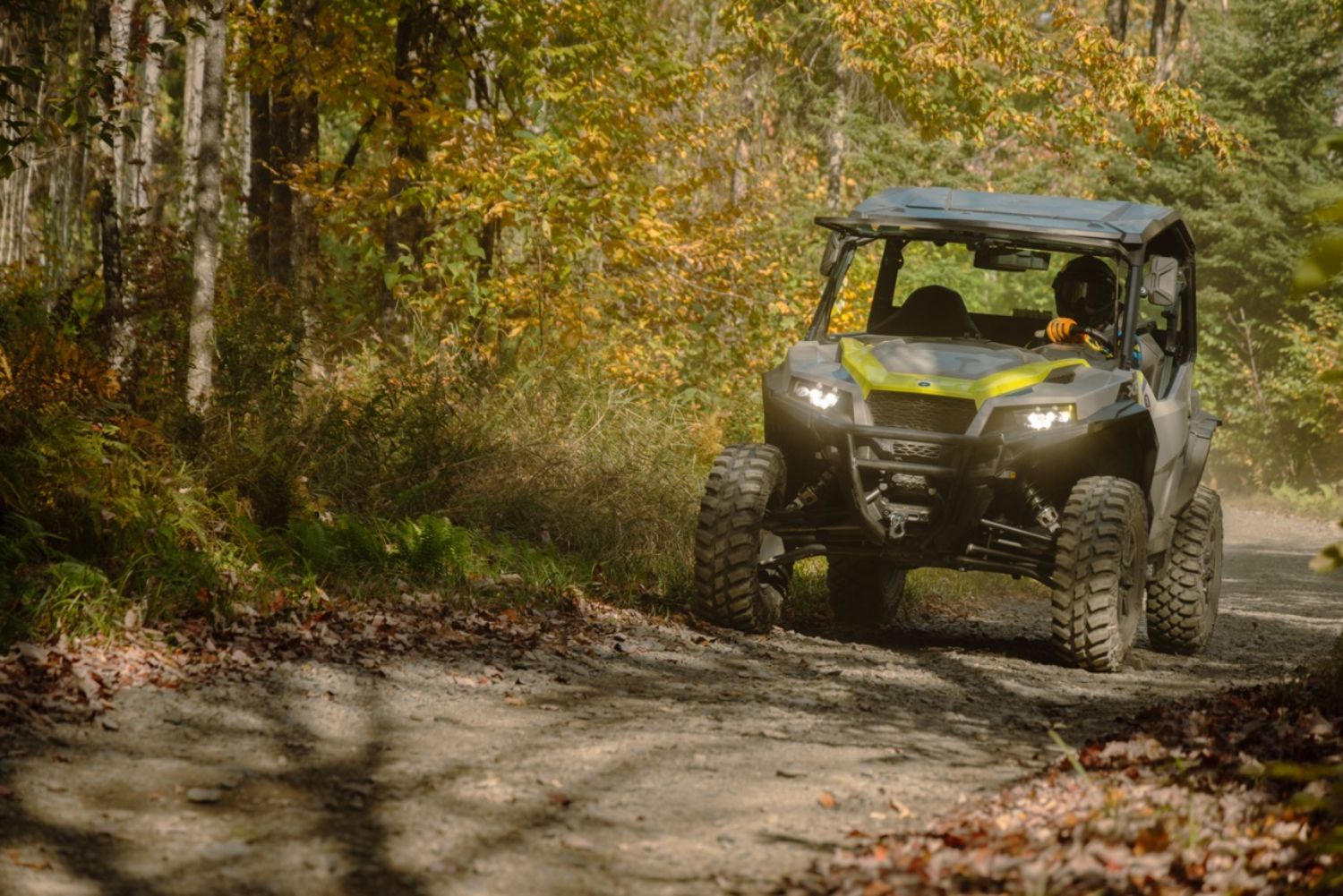
The suspension, thanks to the Walker Evans shock absorbers, is one of the vehicle’s strong points and does a very good job of controlling shocks. It absorbs bumps and cracks in the trail well at cruising speed. Even when pushing the pace, it never loses its composure by returning excessive shocks to the passengers. At no time did the suspension hit the bump stops.
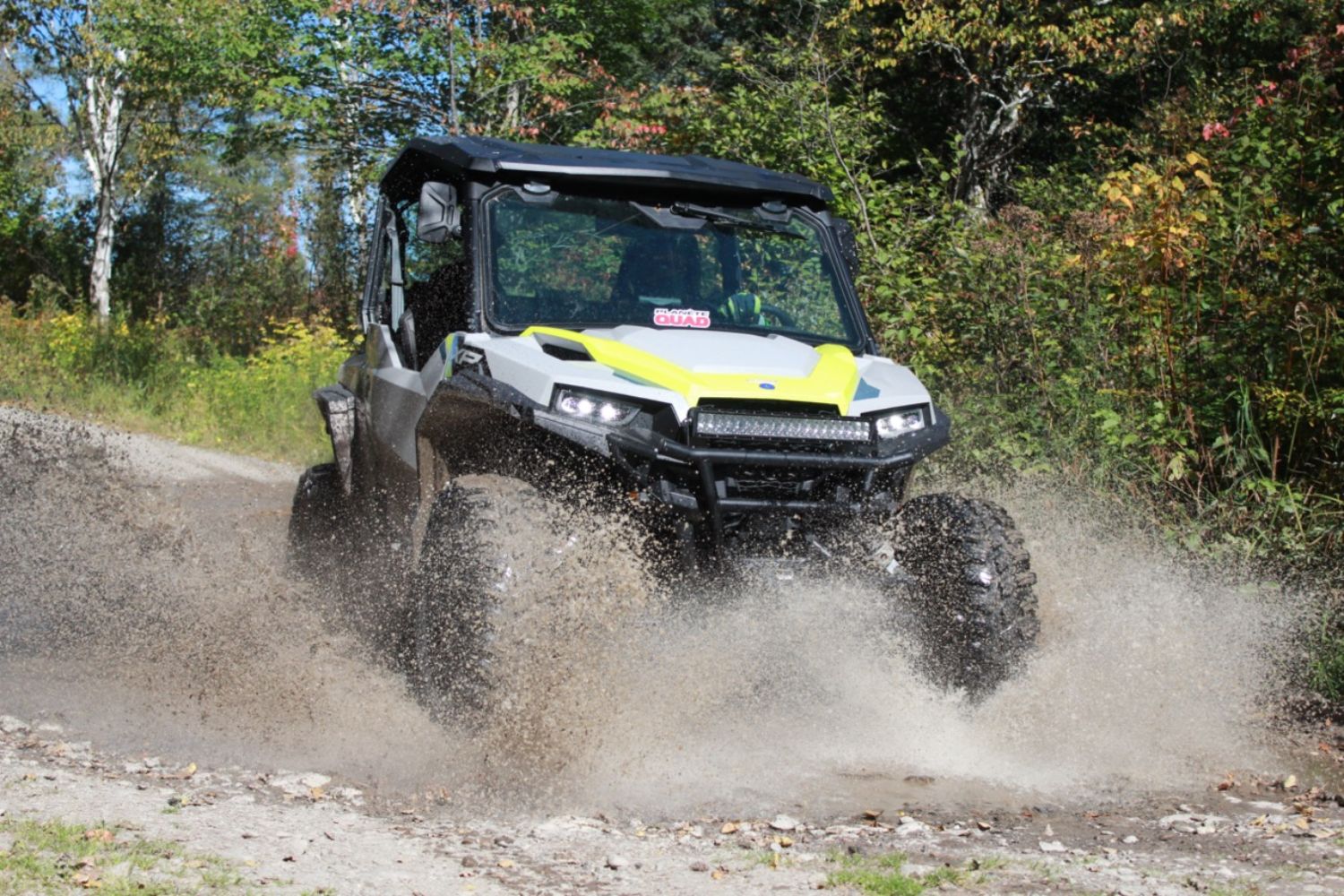
In sharp turns, there is some roll, but it is well controlled, and once the driver gets used to it, they can take the curves with confidence. The power steering, which is both precise and responsive, provides good feedback from the terrain and allows the vehicle to be positioned accurately on the trail. Finally, even with relaxed driving, long distances can be covered in a short time thanks to the perfect harmony between the various mechanical components. The General offers occupants a relaxed touring experience and demonstrates great ease of movement.
Engine and transmission
The following are evaluated: acceleration, hill climbing ability (torque), transmission efficiency, engine braking, overall smoothness of the powertrain, and traction system components.
Can-Am Commander 1000R XT-P:
Power comes from the Rotax 1000R, a 976cc V-twin engine that delivers 100 horsepower. This engine has been in the lineup for several years and is very reliable. It is paired with a CVT transmission with Quick Response System (QRS), which seems effective, as the response is always optimal. Acceleration is brisk without being overwhelming. It is sustained and quickly propels us to over 100 km/h if desired. The engine brake is a little more noticeable than on the Polaris General, but it is not intrusive. We measured an average fuel consumption of 13.4 liters per 100 kilometers in Sport mode. An Eco mode is also available.
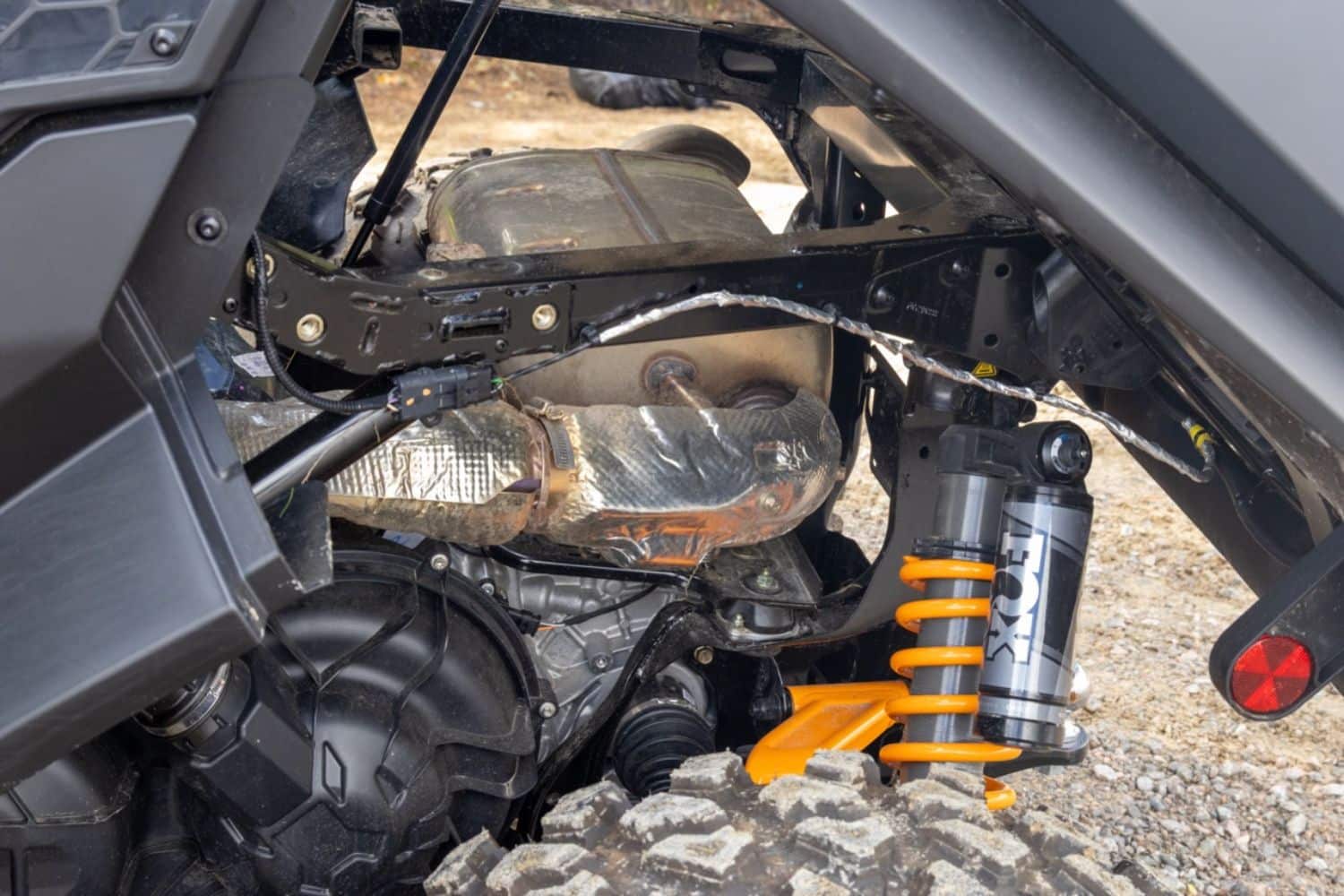
The Commander’s traction system is sophisticated. The driver can select two- or four-wheel drive modes with Smart-Lok front differential technology that locks automatically without driver intervention when necessary. The Trail Activ feature mentioned above is also included.
Polaris General XP 1000 Sport:
The General is powered by a 1000cc Prostar parallel twin engine with electronic fuel injection that develops 100 hp. This engine has a very good reputation for reliability. The CVT transmission has a high and low range that can be selected using the gear lever. Apart from a slight initial delay when engaging, the transmission works in perfect harmony with the engine. The engine brake is present but moderate when you release the throttle. During testing in touring mode on a forest trail, we measured an average fuel consumption of 12.4 liters per 100 km. The manufacturer has not provided a driving mode, but honestly, we don’t feel the need for one. The mechanics are flexible enough to handle any situation.

The Polaris’s traction system is True On-Demand. It does not operate in constant engagement even when selected. In fact, only the rear wheels are permanently driven, and the front wheels will engage automatically when the system detects a loss of traction at the rear. Once traction is restored, the system disengages the front wheels to return to two-wheel drive. This principle will be repeated throughout your ride. As for Turf mode, it will greatly protect your lawn if you use the vehicle to work on your property.
Suspension
The following are evaluated: ability to absorb bumps and cracks, body movement control, rebound control, travel range, components, etc.
Can-Am Commander 1000R XT-P
The XT-P version, designed for inspired driving, comes with 15-inch aluminum wheels with 30-inch XPS Hammer Force tires with beadlocks. The suspension is independent on all four wheels with double wishbones at the front and longitudinal arms with torsion bars at the rear. It is equipped with FOX 2.5 Podium QS3 Piggyback gas shocks that are adjustable in three positions. Front and rear travel is 14 inches and the vehicle’s ground clearance is 13.5 inches.
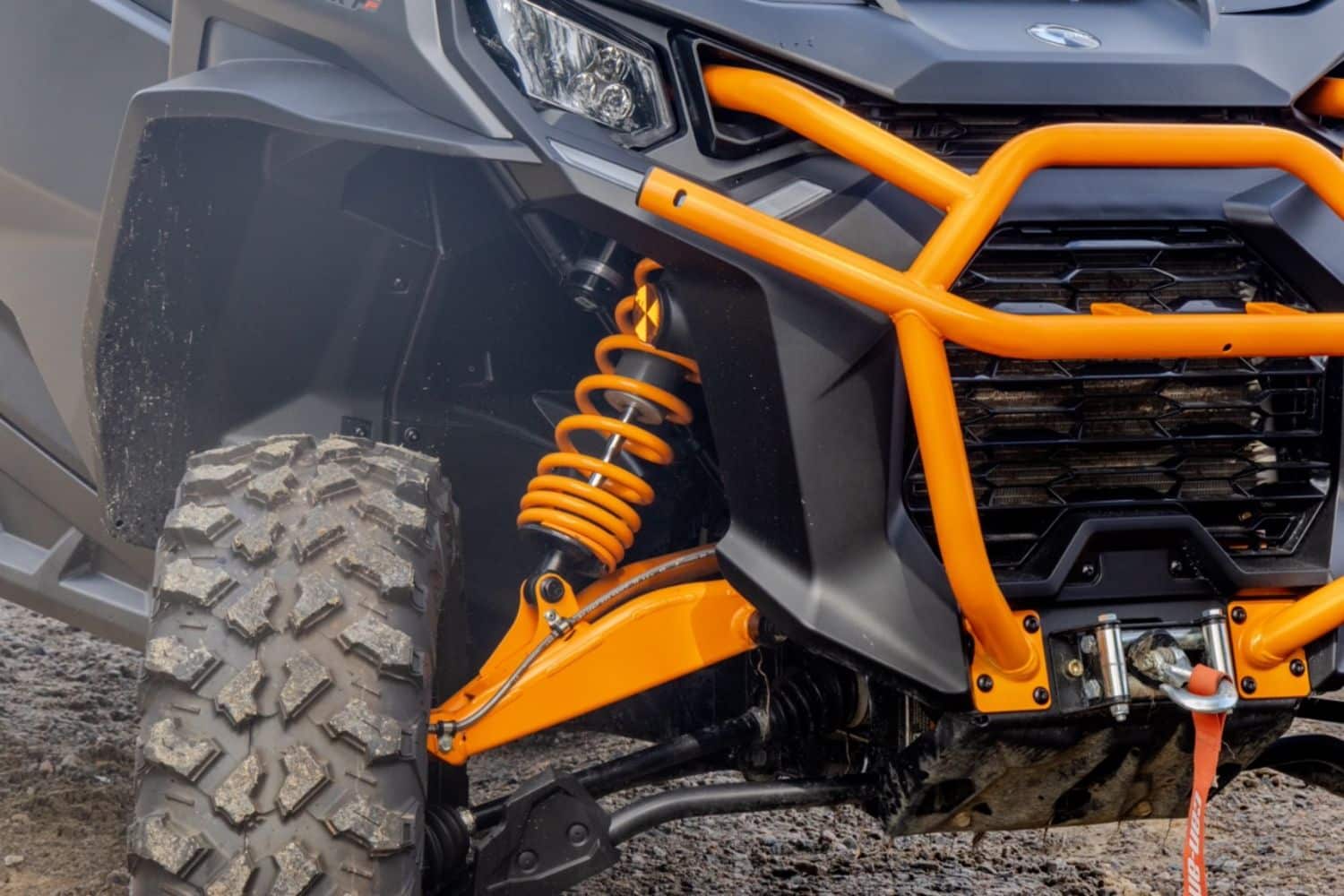
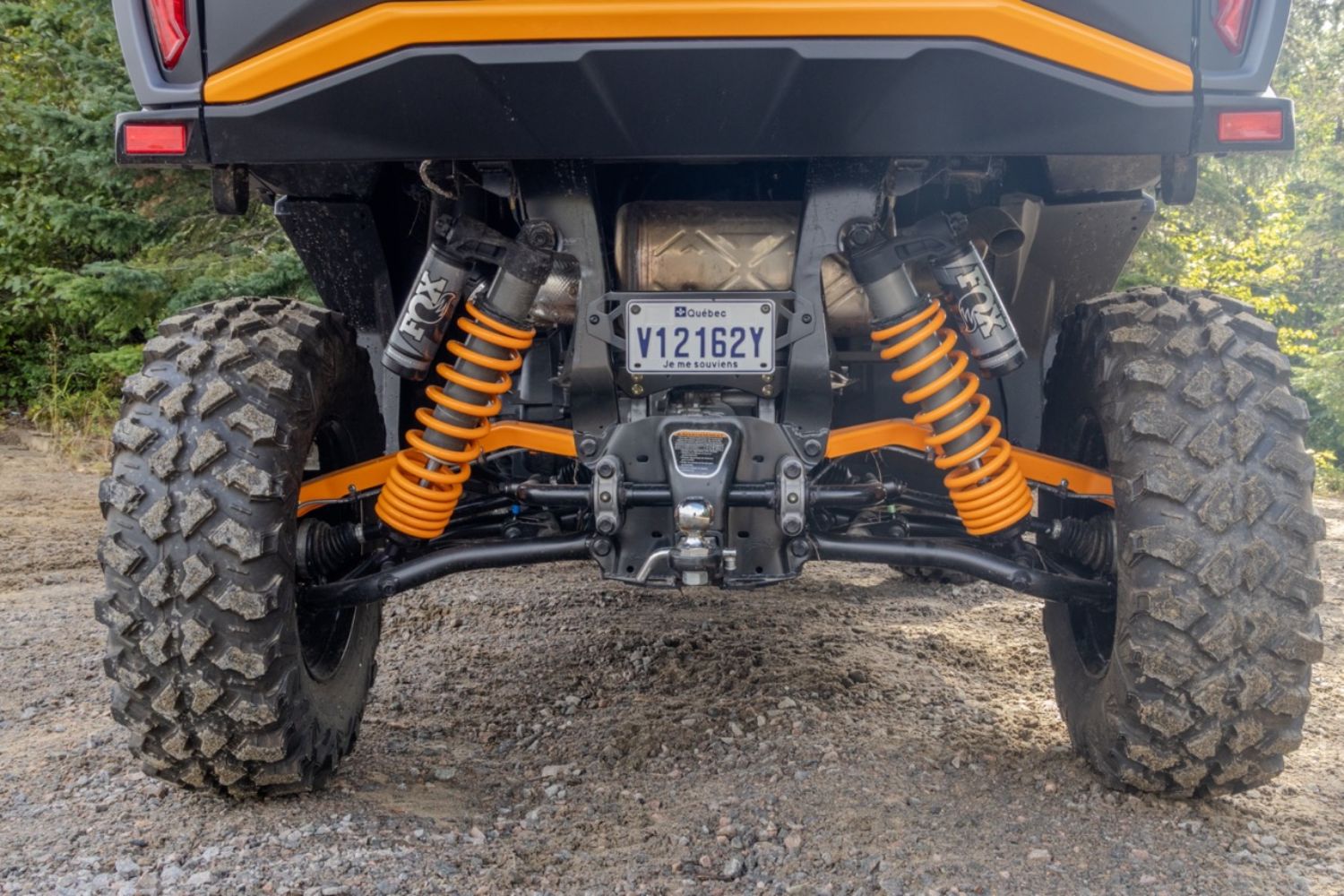
The suspension behavior is consistent with the impressions you get when you get in. The ride is firm because the stiff shock absorber settings mean you feel the bumps more as the wheels pass over them. That doesn’t mean the vehicle has poor suspension. However, it is the price you pay for a better feel for what is happening under the vehicle. In fact, the driving experience is sportier and you can really feel the cohesion of the entire mechanical system while riding. Roll in corners is very well controlled, as is the vehicle’s dive during heavy braking. The Commander could be described as the roadster of the woods.
Polaris General XP 1000 Sport
The technical solutions implemented for the General’s front and rear suspensions are double wishbones with anti-roll bars and Walker Evans Velocity Series gas shock absorbers. These shock absorbers allow you to adjust compression and rebound according to the type of driving you want with 20 clicks of adjustment. The suspension has 14 inches of travel at the front and rear. The vehicle’s ground clearance is 13 inches. Finally, the tires on all four wheels are 30 x 10 R15 Pro Armor Crawler XG tires on 15-inch aluminum rims.
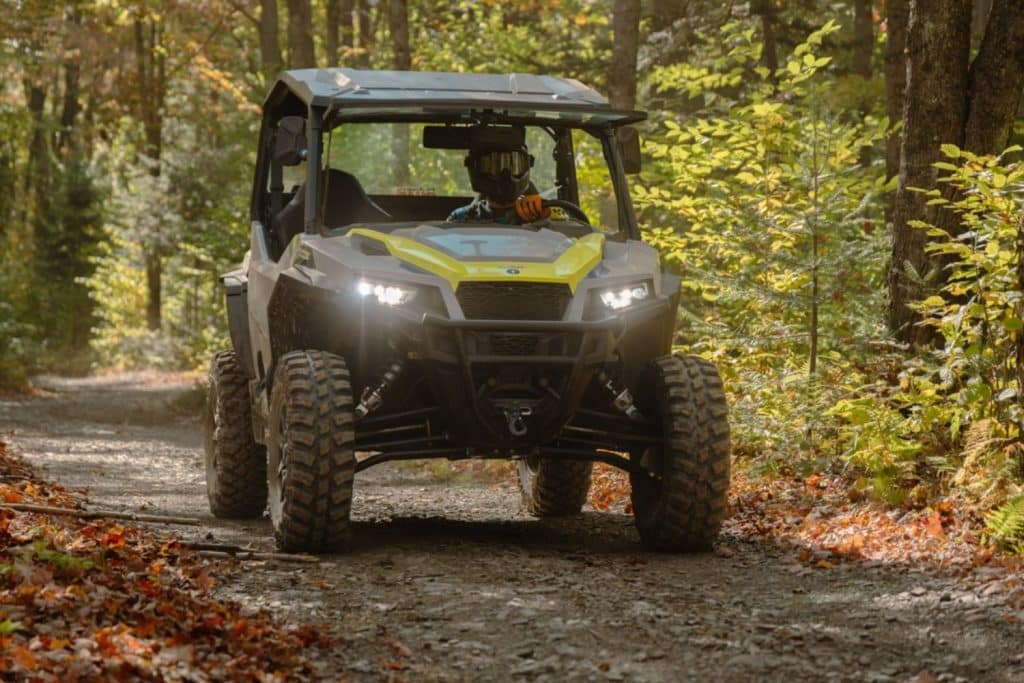
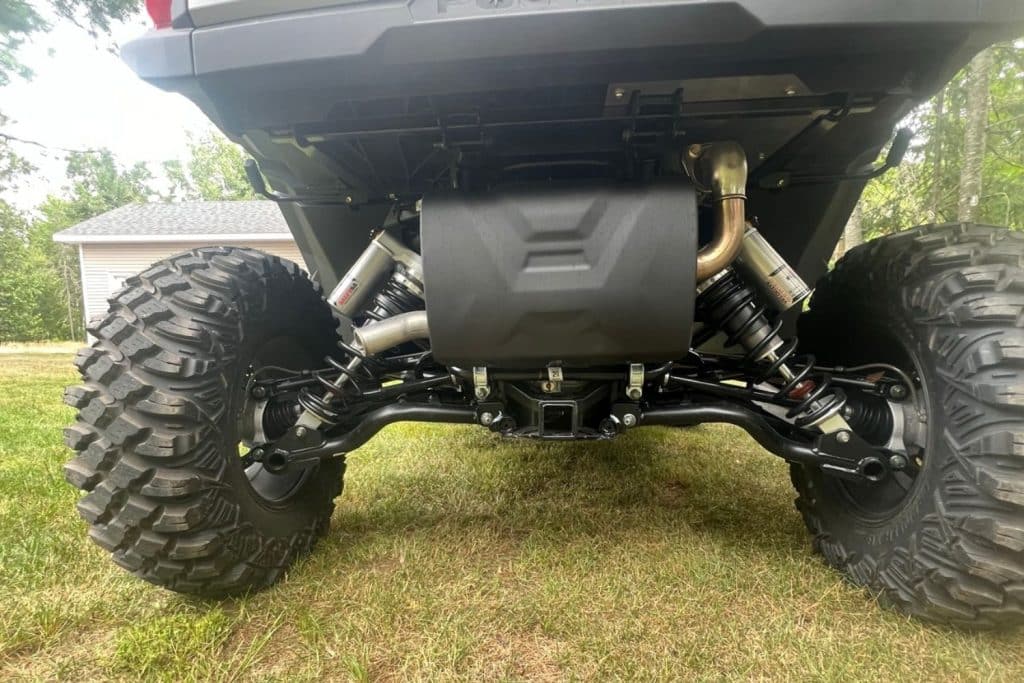
The adjustment range is very wide on the General XP 1000, allowing you to choose a firmer setting or a softer, more American-style suspension. Even when adjusted in this way, the General rocks but does not lose its composure. There is a slight floating sensation in the first section of the shock absorbers’ compression, but once under load, the vehicle holds its own and allows you to ride at a respectable pace. In terms of comfort and bump absorption, the General XP1000 is hard to beat.
Budget
The retail prices for both vehicles are very similar, reflecting the competition between the two manufacturers in this segment. Can-Am has a slight advantage with its longer 6-month warranty, but for the difference in price, you can purchase an extended warranty from Polaris. It’s a matter of your priorities. Here are the suggested retail prices, including preparation and transportation costs.
Can-Am Outlander 1000R XT-P
Total price: $31,269, 12-month parts and labor warranty.
Polaris General XP 1000 Sport
Total price: $33,894, 6-month parts and labor warranty.
Conclusion:
Is there a winner or loser in this comparison? It would be unfair to crown one, as both are very competent in their intended purpose. If you like to drive a livelier roadster and enjoy inspired driving, go with the Commander. If you prefer a more comfortable ride with soft suspension and plenty of space for passengers, go for the General. But in either case, you’ll have a highly efficient vehicle to take you wherever you want to go in the woods.
